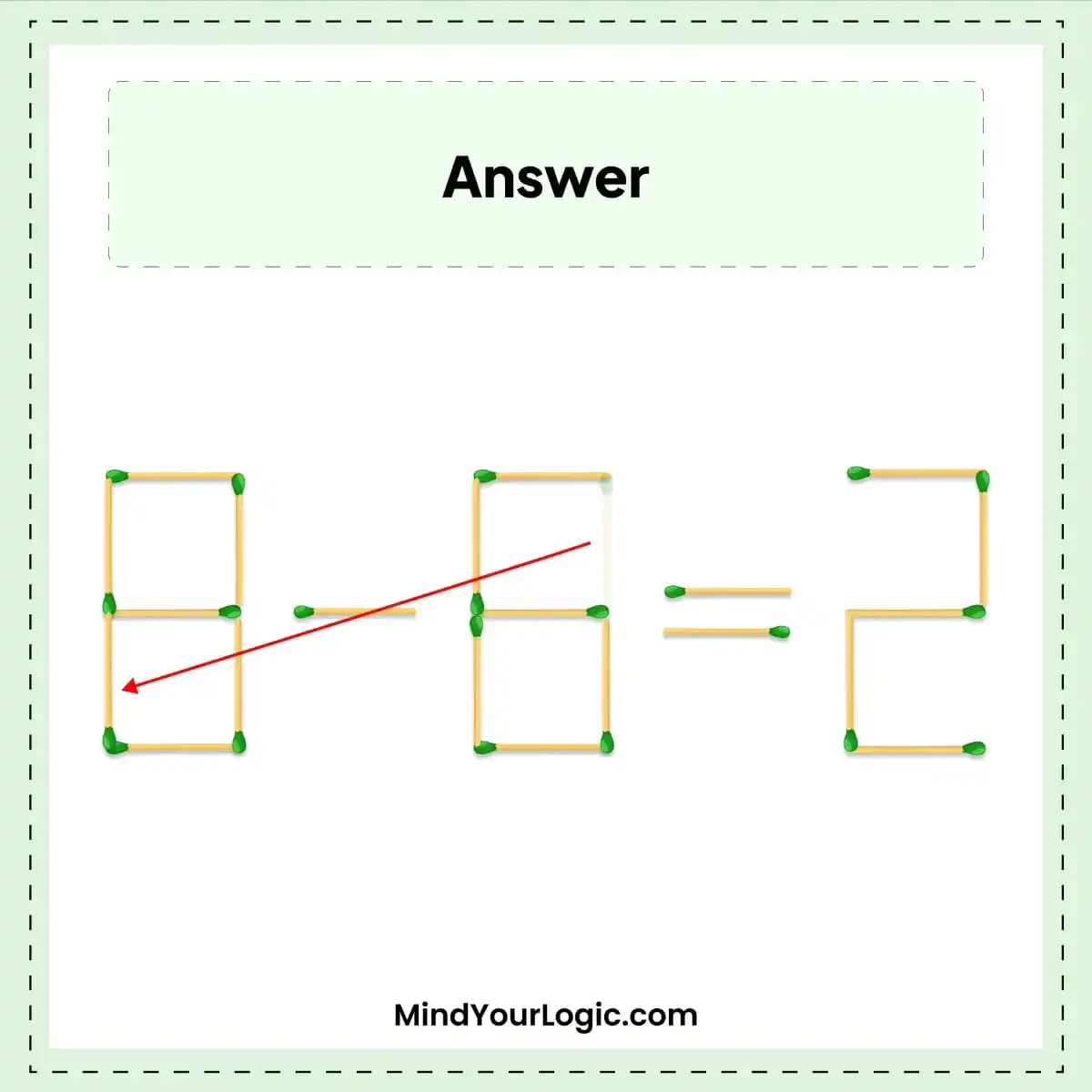
Solving the matchstick puzzle 9-8=2 is as simple as moving just one matchstick to create a valid math equation.
Start with the original equation: 9-8=2.
Take one of the matchsticks from the number 8.
Place the matchstick you removed from 8 into the number 9, turning it into an 8.
So the 8 becomes 6 and 9 becomes 8
Your equation now reads 8-6=2.